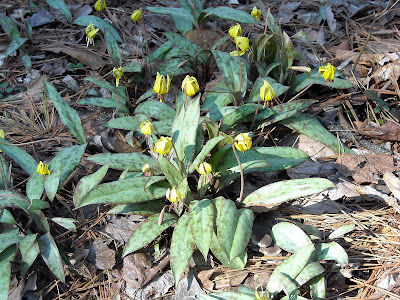
The first picture is of a pecan starting to leaf out. Folk wisdom (and also my grandmother Hubert) says that it is safe to plant your garden when the pecan leaves are as big as a squirrel's ear. I think these would qualify. Except. Of the 4 pecan trees I examined, two were leafing out and two were not. You have to wait anyway. The second picture is oak blooms. The ground is too wet to work.
Several people I know are allergic to oak blooms and the spring bloom gives them fits. I thought this was a beauty, but I guess it depends on whether you are allergic to it or not. I think the recent rains brought down a lot of the pollen in the trees around my house, so I can sweep the porch any time now. No use doing it before the pollen fall finishes.



.jpg)
.jpg)
.jpg)
.jpg)
.jpg)
























